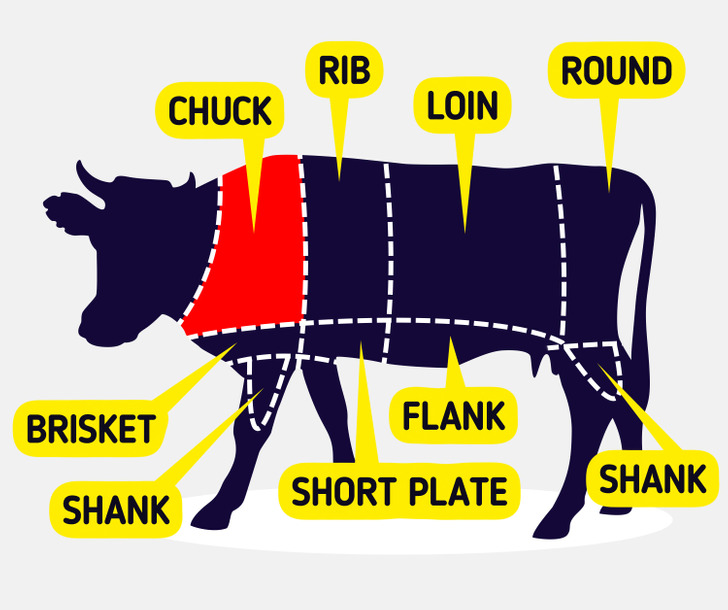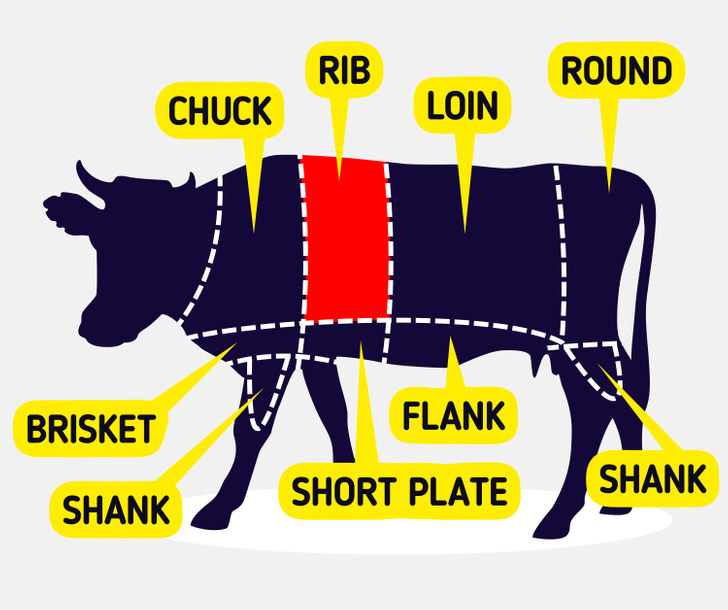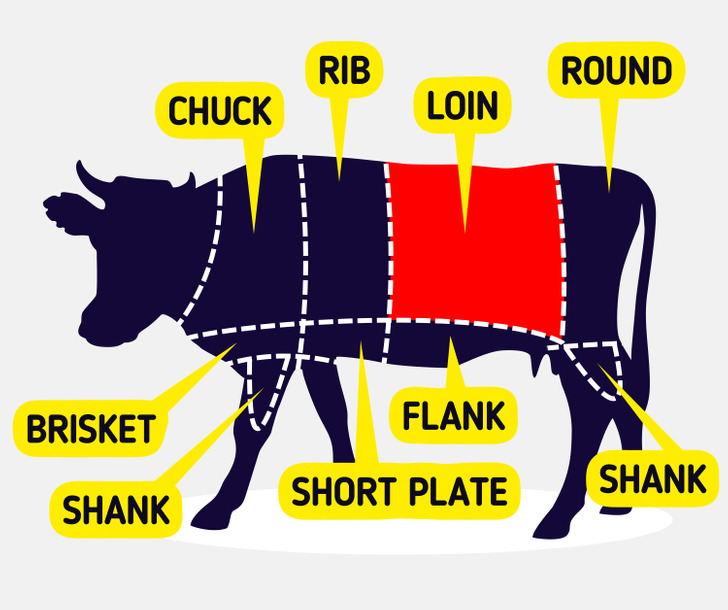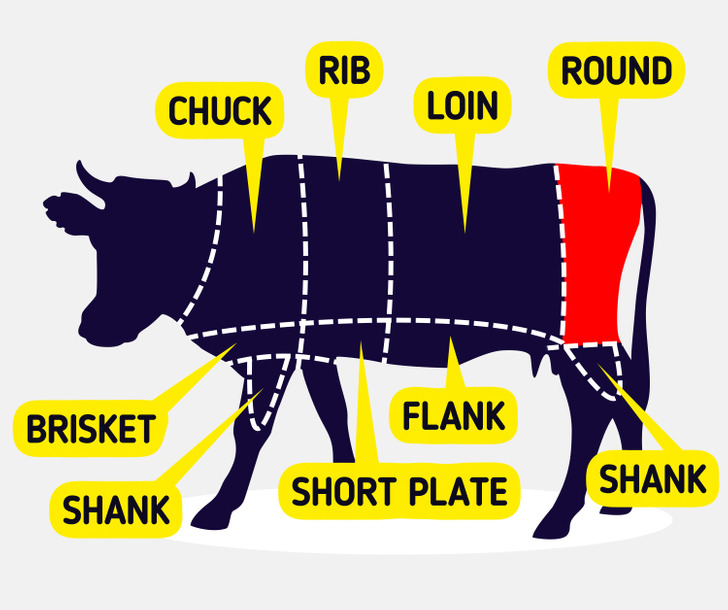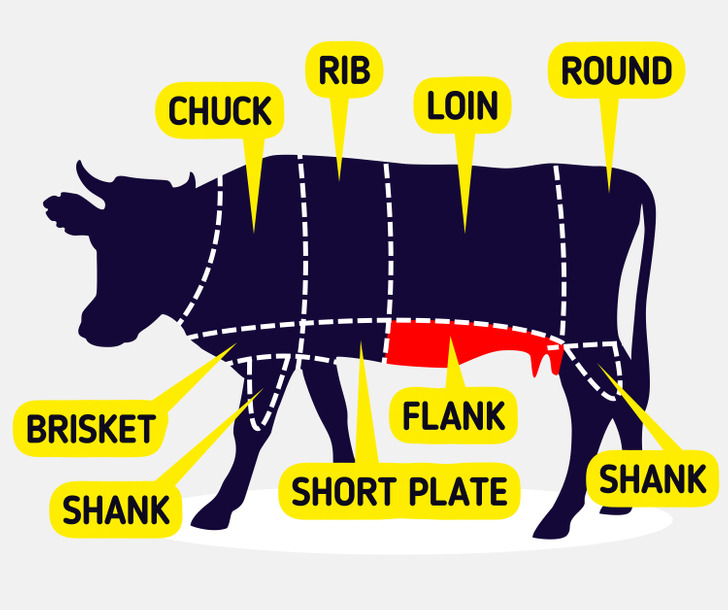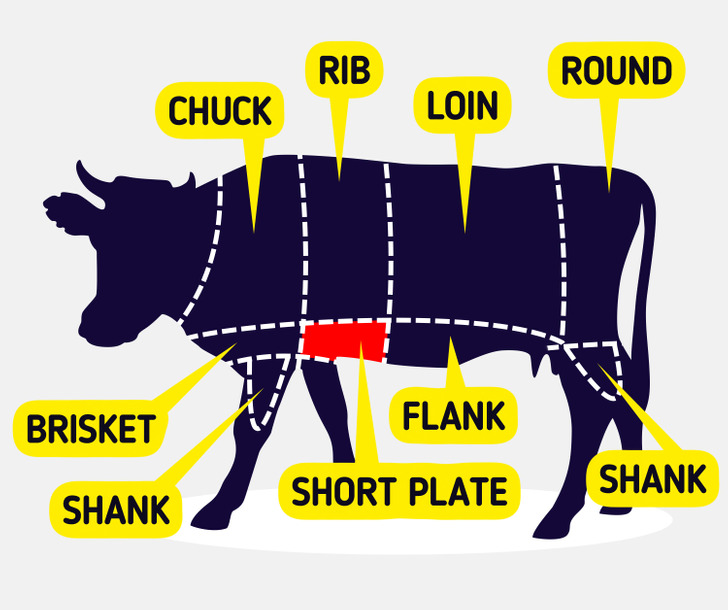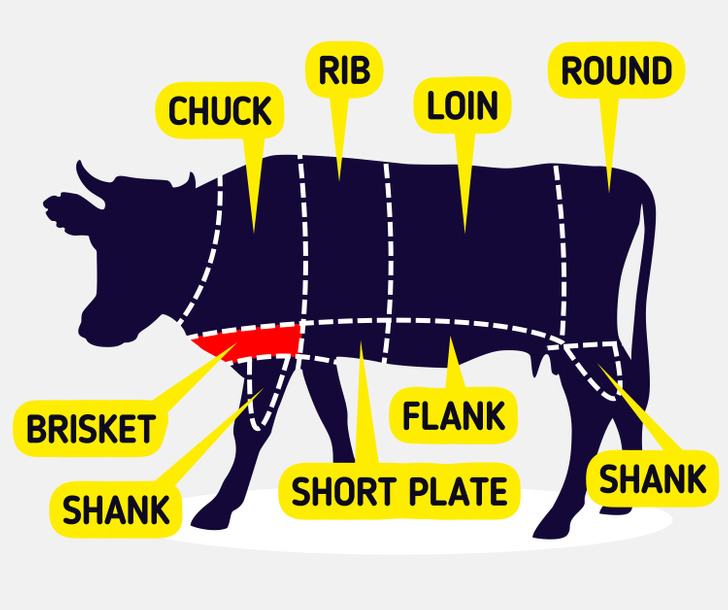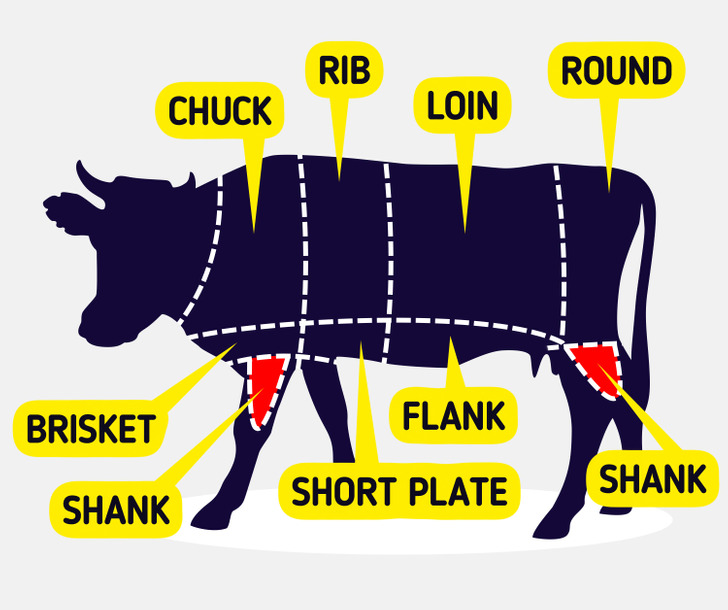A Guide to Beef Cuts
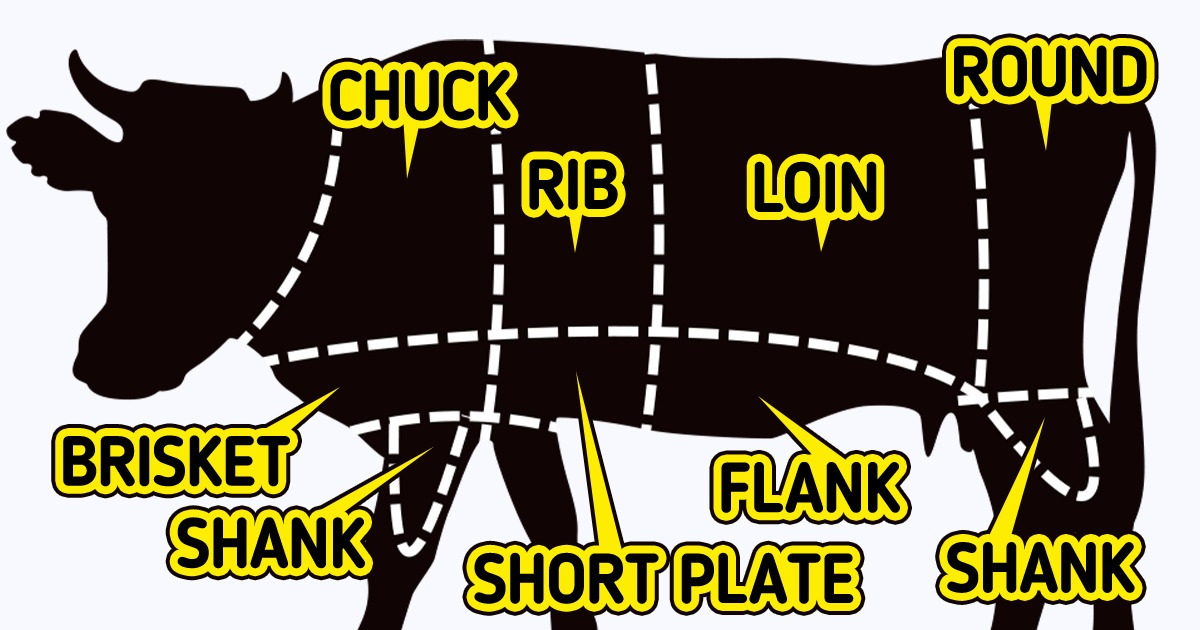
There’s nothing better than eating a delicious steak or braised beef properly cooked. However, the process of going into a store and choosing a beef cut can be overwhelming due to the numerous options available.
5-Minute Crafts will present 8 of the most common beef cuts. We’ll cover the basics: their origin, characteristics, cooking tips, and portion cuts (the cuts of meat that are found in stores, like ribs).
1. Chuck
Chuck is a very flavorful but rather firm cut that comes from the cow’s shoulder. Since this area gets a lot of movement from the cow, the chuck cut is pretty tough due to its lean nature.
- How to cook it: Chuck gets more tender and juicy the longer you cook it, so it’s great for braised dishes (such as stews and casseroles). Also, it’s useful for ground beef due to its content of fat.
- Portion cuts: shoulder tender medallions, chuck pot roast, and stew meat, amongst others
2. Rib
The rib cut comes from the animal’s ribs and backbone. This type of meat is very tender and flavorful, and it’s well-known for its fatty marbling; also, it’s somewhat pricier than other cuts.
- How to cook it: This type of meat is better slow-cooked than grilled.
- Portion cuts: ribeye steak, ribeye filet, back ribs, and similar options
3. Loin
The loin is obtained directly behind the ribs. Due to this location, this muscle isn’t heavily used, which makes it a very tender cut in relation to other muscular areas.
The loin is one of the most expensive cuts of beef. There are 2 main types: sirloin and short loin.
1️⃣ Sirloin:
It’s the rearmost cut of this section. It’s more flavorful but less tender than the short loin.
- How to cook it: It’s recommended for grilling and should be avoided for slow cooking.
- Portion cuts: sirloin steak, top/bottom sirloin, and tri-tip roast, amongst others
2️⃣ Short loin:
It’s similar to sirloin cuts, but it’s located closer to the center of the cow (therefore, being more tender).
- How to cook it: It’s best grilled or fried because it tends to dry out quickly.
- Portion cuts: New York strip, porterhouse, filet mignon, etc.
4. Round
The round area can be found near the cow’s hind legs; it’s a lean and tough cut that is quite inexpensive. Due to its low-fat nature, it’s important to learn how to properly prepare and cook its individual portion cuts.
- How to cook it: Sometimes it requires high-heat cooking (including top, bottom, and eye round portion cuts), and other times, it needs slow-cooking (such as rump and eye roast).
- Portion cuts: round steak, the eye of round, top/bottom round roasts, and others
5. Flank
The flank cut is located right below the loin in the abdominal region; it’s a tough but flavorful type of meat that has no bones. It used to be the least expensive cut in stores, but prices of flank steak have recently gone up due to a higher demand for lean meat.
- How to cook it: Steaks taste great when grilled at high temperatures.
- Portion cuts: Usually, you’ll either buy 2 flank cuts available (flank steak or a skirt steak).
6. Short plate
The short plate primal cut is located near the stomach of the cow, ranging from its front legs to just before the hind legs. It’s a cheap beef cut that is a little bit tough but also extremely rich in flavor due to its numerous fatty layers.
- How to cook it: It’s ideal to braise and cook it for long periods of time.
- Portion cuts: skirt steak, beef bacon, and pastrami, amongst others
7. Brisket
Brisket is located under the chuck: at the front, lower section of the animal. This cut is known for being very tough, which makes it hard to cook if not done correctly.
- How to cook it: Prepare this beef slowly at a lower temperature to achieve the best results. You should always tenderize and marinate brisket to avoid cooking a dry meal.
- Portion cuts: You’ll either find brisket point or brisket flat, the latter having leaner characteristics.
8. Shank
A shank is obtained from the thigh of the animal, including the forelegs and hind legs. This is the toughest beef cut, which is also famous for its dry and sinewy characteristics. Since it’s not the most appealing meat cut, it’s hard to find it in retail stores, but it’s the cheapest option out there.
- How to cook it: It’s better to cook it for a long time in moist heat (such as in stews or soups).
- Portion cuts: You’ll find 2 types of this cut, which are foreshank and hind shank.
